Who is Mondrian? Biography and Early Painting Career
Piet Mondrian was a Dutch painter active in the late 19th and 20th centuries.
He was active in the early days of abstract painting, and is often referred to as the father of abstraction, along with painters of Russian descent such as Kandinsky.
Mondrian is known for founding the art magazine "De Stijl" and advocating the art theory of "neo-plasticism" in them.
His most famous works are the "Composition" series with very simple black lines and brightly painted areas.
In the early years of his painting career, when he spent time in Amsterdam, Holland, his style followed the realist tradition. It was during this period that glimpses of the emphasis on color that would later lead to abstraction began to emerge.
%2C_oil_on_canvas%2C_70_x_99_cm%2C_Gemeentemuseum_Den_Haag.jpg)
Evening; Red Tree, 1908 - 1910
Mondrian was born in Utrecht, the Netherlands, in 1872.
From a young age, he was drawn to mysticism and theosophy.
He studied at the Academy of Fine Arts in Amsterdam, where his work was also influenced by naturalism, impressionism, and fauvism.
Paris Period
In 1911, he moved to Paris and joined the local avant-garde group.
At this time, he dropped the "a" from the original Dutch spelling of his surname, "Mondriaan," and began to work as "Mondrian. This action symbolized his separation from Holland.
In Paris, he produced works that were strongly influenced by the cubism of Picasso, Braque, and others.
%2C_oil_on_canvas%2C_79.7_x_109.1_cm%2C_Gemeentemuseum_Den_Haag%2C_Netherlands.jpg)
Gray Tree, 1911
Back to Holland
Unlike the Cubists, Mondrian, who was devoted to spirituality and theosophy, tried to break away from symbolist production.
He returned to the Netherlands temporarily in 1914, but was forced to stay in the country when World War I broke out.
During this period, he met painters such as Bert van der Leck. His use of primary colors had a great influence on Mondrian, who said of him: "My way of painting is more or less the same.
He said, "The way I painted was more or less cubist. So it was more or less a landscape painting. But I was greatly influenced by his (Van Der Leck's) precise technique.
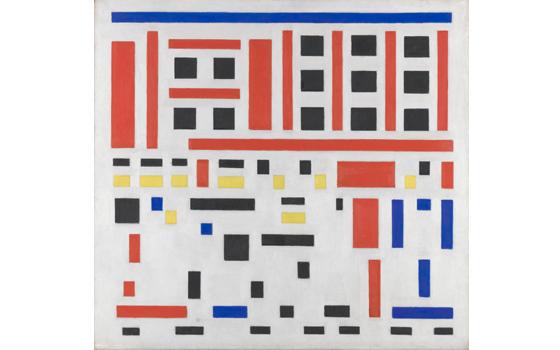
Van der Leck's work
Van der Leck and Mondrian jointly founded an art magazine called De Stijl. In the magazine, Mondrian sublimated the use of limited elements such as primary colors, black, white, and straight lines into an art theory known as "Neoplasticism" (neoplasticism).
What is Neoplasticism?
The essence of Neoplasticism, which Mondrian proposed and pursued, is described in a letter to a painter friend named Bremer.
I build combinations of line and color on a flat surface. It is with the greatest concentration that I express universal beauty. Nature (or what I see) inspires me and gives me the urge to create something. But I want to get as close to the truth as possible and extract all the elements from it. And I want to reach the fundamentals that support it... even if they are still superficial.
I think it is possible to bring about harmony and rhythm if the horizontal and vertical lines are drawn with a clear will, but with a lofty intuition, not a calculating one. The strength and sanctity of that line is that it is art."
Again in Paris
After the war ended in 1918, he returned to Paris, where he would spend the next 20 years until 1938.
From this point on, he pursued pure abstraction exclusively.
From 1919, he began to produce a series of abstract paintings in a grid structure called the "Composition Series" on a continuous basis.
Mondrian's transition to pure abstraction before and after the Great War can be seen symbolically in his paintings of trees, which were his continuous motif. It is worth seeing how what had borrowed the colors and shapes of real motifs gradually became something that could only be a "painting.
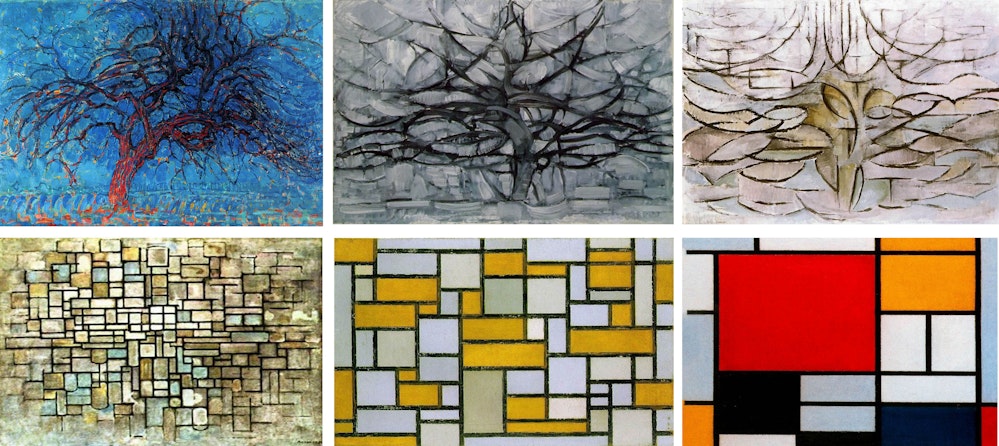
Later, he moved to London and New York, and gained worldwide fame during his lifetime.
Representative works from this period include the "Composition Series" and "Broadway Boogie Woogie," inspired by the dice-shaped streets of Manhattan.
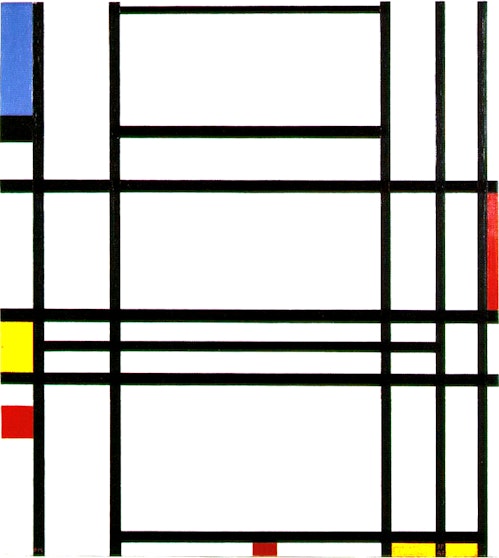
Composition No. 10 (1939-1942)
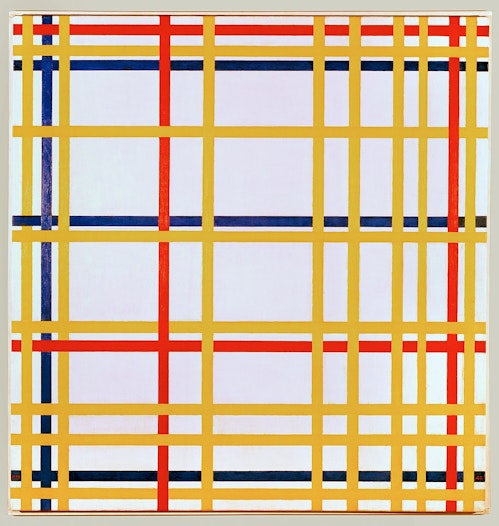
New York City (1942)

Victory Boogie Woogie (1942-1944)
At TRiCERA ART, he met a painter who was influenced by abstract painting!
Abstract painting, which flourished mainly in the United States during the 20th century, continues to inspire working artists.
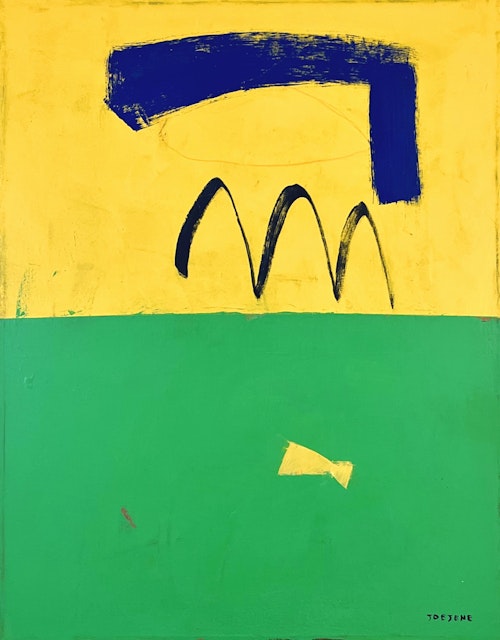
Yellow No. 3 by Joejene C. Santos
W 55.80cm x H 71.10cm / JPY 165,800
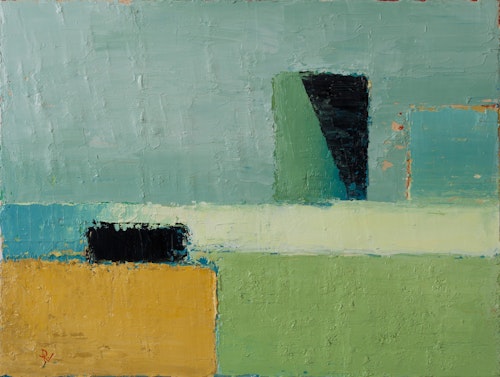
Abstract Figurative Composition 14 by Roman Dolgopolov Goss
W 40.00cm x H 30.00cm / ¥92,900
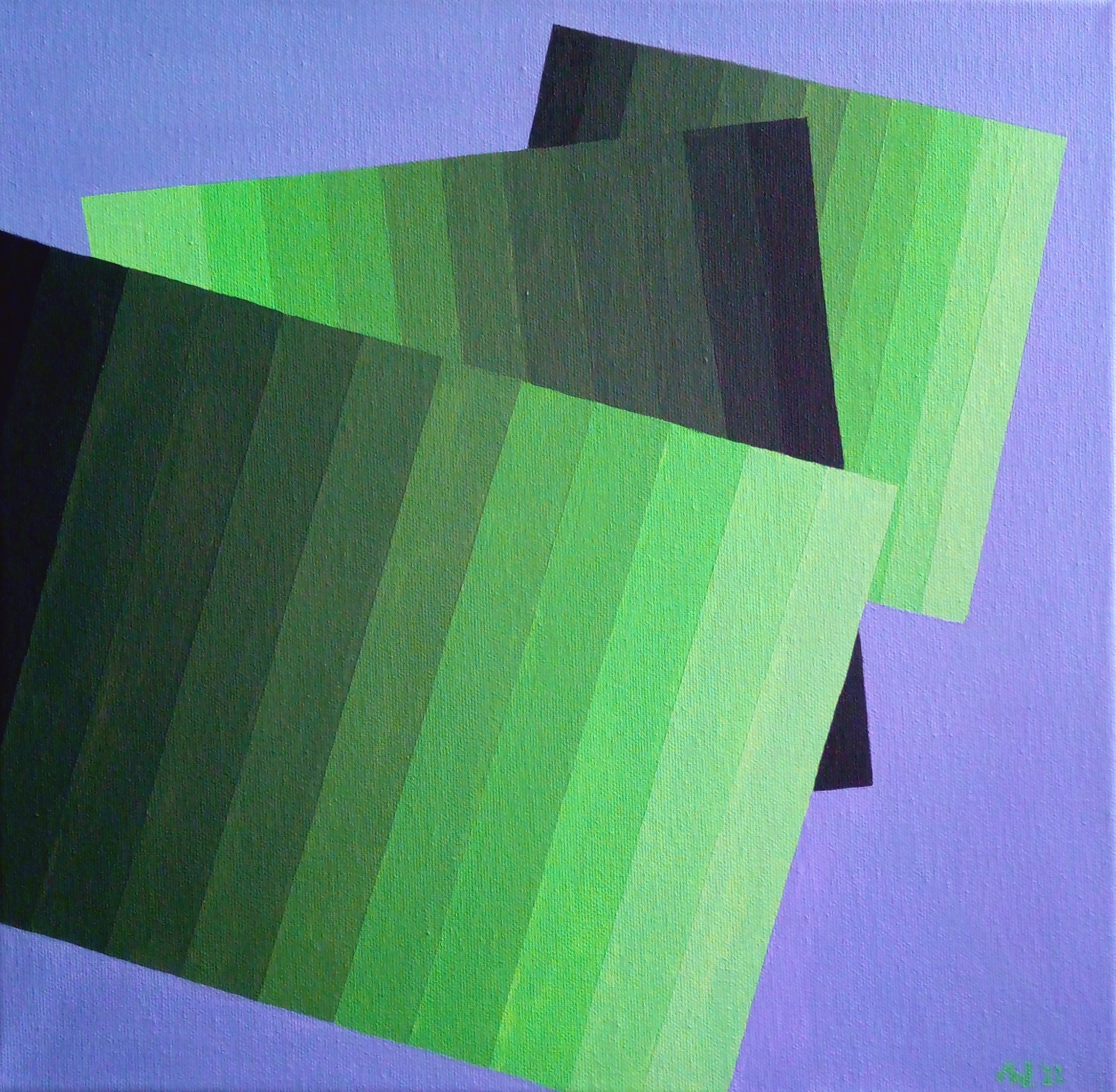
Untitled 1 by Malvina - Carola Liuba
W 40.00cm x H 40.00cm / ¥64,700
TRiCERA ART members enjoy a variety of special privileges and preferences.
- Discounts such as members-only secret sales and coupons
- Create your own collection by registering your favorite artists
- Receive updates on popular artists, exhibitions, and events
- Receive a weekly newsletter with selected art
- Personal Assessment to find out what kind of art you like.
Please register as a member for free and receive the latest information.
Free Member Registration